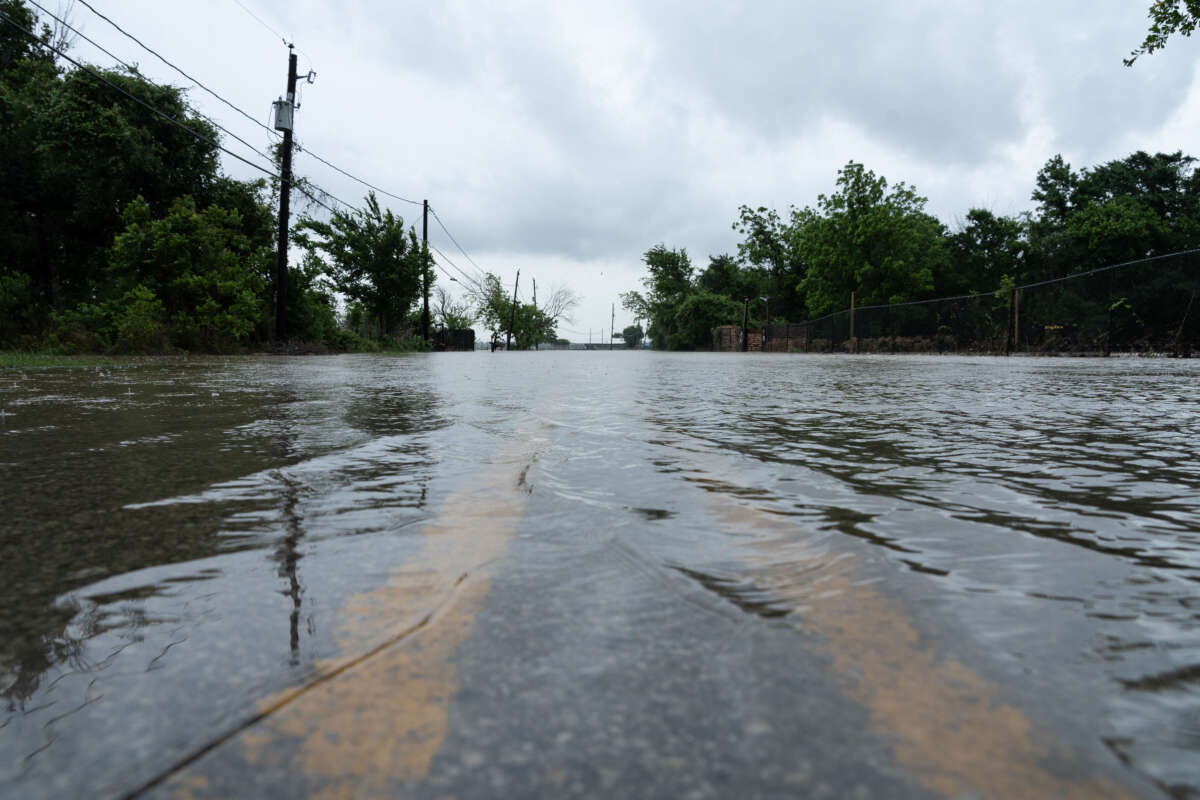Honest, paywall-free news is rare. Please support our boldly independent journalism with a donation of any size.
We are just beginning to see how expensive adapting to a new climate will be.
The Bureau of Indian Affairs has awarded $25 million for three communities working on their move to higher ground. In addition to Taholah, on the Quinault Indian Nation, there are two villages in Alaska, Newtok Village and the Native Village of Napakiak, on the agency’s list.
The BIA will spend another $12.7 million next year on managed relocation for tribes in Maine, Louisiana, as well as others in Alaska and Washington state. All told the administration’s budget for next year is $119.5 million for tribes and community-based projects.
The numbers are staggering when you add them all together. And that’s just in Indigenous communities. Consider this: One recent report says that the cost to home owners globally is around nine percent of the value of housing, or roughly $25 trillion.
“It is a huge bill hanging over people’s lives and the global financial system,” says The Economist. “And it looks destined to trigger an almighty fight over who should pay up.”
Indeed the first wave of climate impacts are already here. A report by the Natural Resources Defense Council — the NRDC — Losing Ground: Severe Repetitive Flooding in the United States looked at the risk of flooding and concluded that more communities are in danger. “The federal government’s efforts to reduce repeated flooding are not keeping pace with current risk — let alone the increasing risk posed by sea level rise, increased severe weather, and other climate change impacts,” the NRDC study concluded.
“The scale of what we all need to be planning for and thinking about is massive. It is a bigger and more communal problem than many of us have ever thought about before in our lifetimes or for generations,” said Anna Weber, a senior policy analyst with the NRDC. “So even in communities that have put so much thought and effort and planning into relocation, you can still see how hard it is.”
The NRDC looked at data from the Federal Emergency Management Agency using federally-backed flood insurance. It’s important to note that most tribal communities are not included in this data set, so it understates the problem, and yet it still shows how significant the risk of flooding is now and in the future.
“The actual risk is changing because of climate change, development patterns, erosion, all of these different reasons. The physical risk is changing. A place that didn’t flood a generation ago might be flooding regularly now. It might be flooding every time there’s a high tide,” Weber said. “Our understanding of that risk is just out of date in a lot of places around the country.”
That means governments, including tribal nations, will have to revise zoning and other regulations to account for the new threats.
Weber said zoning codes and building standards have changed little since the 1970s.
“This is something that FEMA is currently working on. They’re due to propose new regulations to bring these codes and standards up to our modern understanding of flood risk and engineering. But it’s a really long time coming,” she said. And even if they were brought up to date today, they would still only be looking backwards because the data is historical, and it does not even consider the impact of climate change.
“The bottom line is that the flooding risks to communities are increasing faster than officials are dealing with them,” Weber said.
The impact from flooding in Indian Country goes far beyond the dangers on the coasts. A study last month by the American Meteorological Society predicted that Native Americans in Oklahoma will face a 64 to 68 percent higher risk of heavy rainfall, two-year flooding, and flash flooding because of climate change. The authors of that study said: “Indigenous communities are grappling with an imminent climate crisis compounded by systemic injustices.”
Assistant Secretary for Indian Affairs Bryan Newland told ICT that tribes are facing multiple climate challenges that will require a lot of money to make tribes more resilient. “Whether it’s drought or wildfire or changing ecosystems that change the foods that they eat or just more severe weather. It’s not just relocation, which is expensive enough, but it’s also that resilience piece of it,” he said. “And we’re really ramping up our investments there as well. As you know, we just rolled out a $120 million investment in more than 100 locations across the country to help tribes with that resilience piece.”
Tribes are ahead of the curve when it comes to adaptation strategies.
“I was really impressed that they are thinking at Quinault very strategically about how to address these questions. And a lot of the people that I spoke with in the community are being very thoughtful about that, along with community members in places like Newtok,” Newland said. “They’re thinking about their kids and their grandkids and the community that they’re going to live in and future generations. And, you know, these questions, when you really start doing this work, become very complex very quickly.”
Newland said tribes are not just leaders in the United States but “they are really serving as leaders in this effort for the world. There aren’t a lot of places that are really engaged in this sort of activity right now.”
Media that fights fascism
Truthout is funded almost entirely by readers — that’s why we can speak truth to power and cut against the mainstream narrative. But independent journalists at Truthout face mounting political repression under Trump.
We rely on your support to survive McCarthyist censorship. Please make a tax-deductible one-time or monthly donation.
